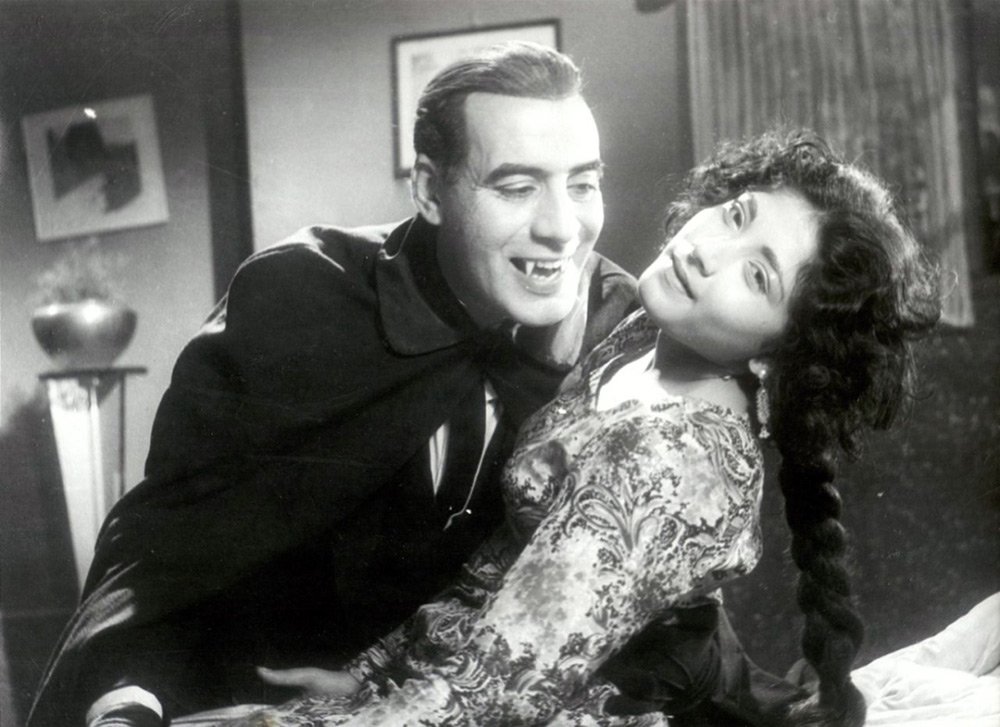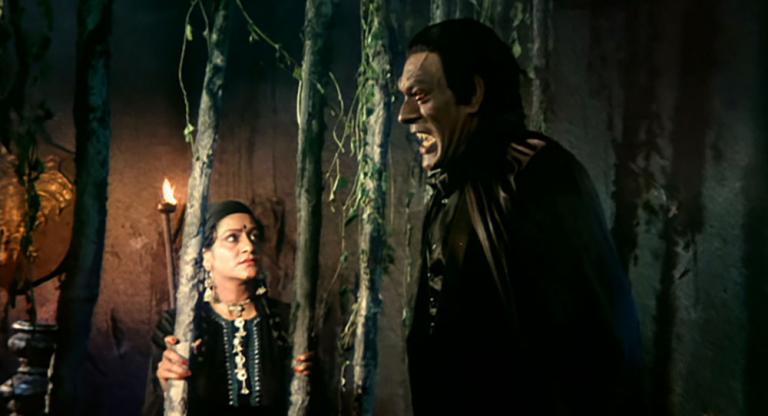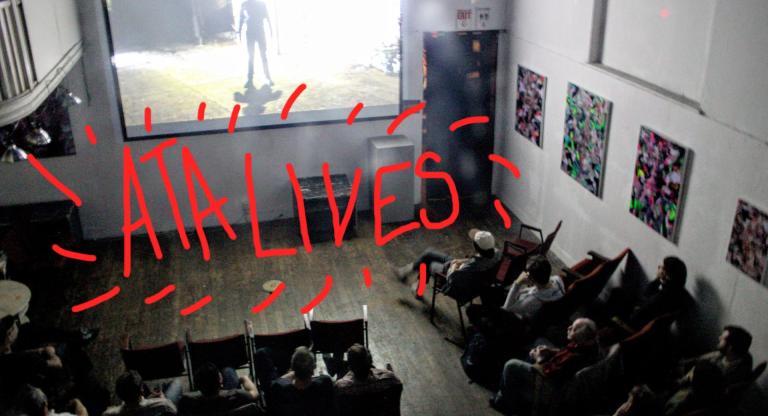Zinda Laash (1967) is widely considered the first horror film to be produced in Pakistan. Directed by Khwaja Sarfraz, the film is an adaptation of Bram Stoker’s Dracula with a mad scientist twist. Controversial enough to garner the first X-rating from wary Pakistani authorities, the film fell into relative obscurity after its initial release only to return from the dead, so to speak, decades later, reaching a wider international audience thanks to the home video label Mondo Macabro. Also known as Dracula in Pakistan, comparisons are often drawn between Zinda Laash and Hammer horror films. But Sarfraz’s film has much more to offer as an intriguing and just plain fun entry into the pantheon of global vampire cinema.
Sarfraz’s film begins with Professor Tabini working on an elixir in his laboratory. He believes his creation will conquer death but instead it kills him (oops!). After his body is placed in the crypt beneath his home, he returns as a vampire. It’s here that the opening credits roll and Zinda Laash begins to follow the familiar narrative laid out in Stoker’s novel. As a Lollywood production (Pakistani films in Urdu or Punjabi), the film contains the requisite musical numbers required to give the proceedings their own cultural flavor. It also borrows some of the score (another common Bollywood and Lollywood practice) from the 1957 American film Blood of Dracula. Aesthetically, Zinda Laash resembles the gorgeous horror films that were coming out of Mexico’s Estudios Churubusco in the ‘50s and ‘60s, owing in large part to a similar mixture of contemporary fashion and decor with large gothic sets and shadowy cinematography. Color films became popular in Pakistan in the early ‘60s, which is considered the country’s cinematic golden era, but Sarfraz’s film, shot in black-and-white, makes good use of the expressionistic qualities the limited palette makes possible.
Zinda Laash pushed the boundaries of Lollywood with its horror and implicit eroticism, but by 1967’s international film standards it’s a fairly chaste affair. The moral limits Islamic society and Pakistan state censorship put on the film, however, are perhaps partially responsible for the sophistication and creativity of its visual language. The horror is often purely cinematographic, with the camera moving through the darkness, in moments pushing into it, emphasizing the sense of dread that comes from what we don’t see. In the film’s most remarkable synthesis of Lollywood and horror, after a beachside musical number, a young woman finds herself alone in the forest, the camera’s distance from her creating an unexpected foreboding as it shows her banal daylight surroundings. Suddenly, the gleeful song and dance becomes something psychologically unsettling before our eyes.
Zinda Laash screens this evening, October 31, at Asia Society. Writer Sukhdev Sandhu and film scholar Kartik Nara will be in conversation after the screening.




